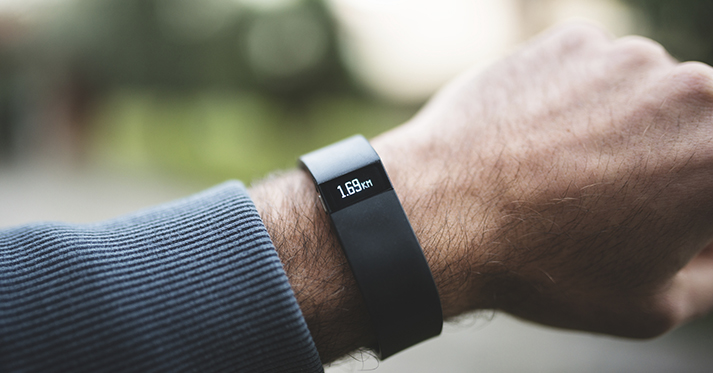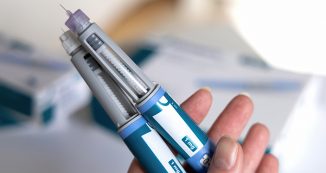
07 Dec Using Everyday Tech Products to Help Those with Parkinson’s Disease
Every year, 50,000 people in the U.S. are diagnosed with Parkinson’s disease, a neurological disorder that causes tremors, slurred speech, and limited mobility. The stark reality of the disease leaves many feeling out of control, unable to slow or stop the progression of the disease.
But recent studies on the effects of exercise on Parkinson’s disease have offered new hope. In both animal and human studies, researchers have found that physical activity helps improve balance, gait, and motor condition in patients with Parkinson’s disease.
In her lab at the UW Medical Center, Dr. Sujata Pradhan studies new ways to apply technology to the field of physical therapy.
While the benefits are known, there is still uncertainty about barriers to physical activity, as well as the type, frequency, and optimal, yet safe, intensity of physical activity needed. Dr. Sujata Pradhan—an Institute of Translational Health Sciences’ Regional Translational Scholar, physical therapist, and Assistant Professor at the University of Washington Department of Rehabilitation Medicine—believes technology can help answer those questions.
In her lab at the UW Medical Center, Pradhan studies new ways to apply technology to the field of physical therapy. Pradhan likes to use commercially-available gadgets and applications. Her current study uses Fitbits and Sensoria smart socks to monitor people with Parkinson’s.
In addition to monitoring physical activity, Pradhan is also studying the relation between activity levels, function, and gait characteristics, as well as participants’ fear of falling.
In January, Pradhan will begin collecting data on 30 elderly participants with Parkinson’s and 30 gender- and age-matched adults without Parkinson’s. For two weeks, the participants will wear a Fitbit HR Charge and Sensoria smart socks. The biggest advantage of using wearable technology is the objectivity of the data, said Pradhan.
I think the pilot data acquired during the Regional Translational Scholars program will help establish feasibility and provide preliminary data to support a larger NIH-funded study. The funding from ITHS has been crucial in getting some of this pilot data.
Designed for runners, the Sensoria smart socks contain textile pressure sensors that send real-time information about cadence, foot landing, and pressure. Pradhan hopes the sensors will pick up small changes in the way patients walk that are not evident to the human eye.
“Clinical observations may be inadequate, especially in the early stages of the disease,” she said. “We hope these devices may be more sensitive to picking up small changes.”
Using the Sensoria data, Pradhan plans to create assessments to help physical therapists treat patients with Parkinson’s disease earlier.
“People are usually referred for rehabilitation only when they have difficulty maintaining their balance or start falling,” she said. “Usually overt clinical deficits in balance and walking appear later on in the disease. We hope that if we bring more awareness to these subtle early symptoms, people will start engaging in and referring to physical therapy earlier.”
In addition to the Sensoria data, Pradhan will study physical activity data gathered by the participants’ Fitbits. Pradhan will specifically compare the data between the participants with and without Parkinson’s to learn if people with Parkinson’s are as active as the healthy participants and if their level of physical activity shows any association with their disease severity and progression.

Dr. Sujata Pradhan
“We know that if you want to slow the progression of the disease, your exercise and intensity of physical activity levels have to be much higher than what you would normally do,” she explained. “If the recommendations for healthy, active adults are 10,000 steps per day, is that enough to translate into beneficial effects on function and disease status for people with Parkinson’s? We really do not know. Our aim is to first find out how active people with Parkinson’s actually are.”
Pradhan’s goal is to develop physical activity recommendations in the fall of 2016, when data collection is completed.
Pradhan’s study is supported by the ITHS Regional Translational Scholars program, which provides early-stage investigators with career development support and $15,000 for research funding. This support has helped Pradhan gather the pilot data she needs for her National Institutes of Health research proposals.
“Even small preliminary project proposals that go to the NIH require pilot data to establish proof of concept for what you are proposing to do,” Pradhan explained. “I think the pilot data acquired during the Regional Translational Scholars program will help establish feasibility and provide preliminary data to support a larger NIH-funded study. The funding from ITHS has been crucial in getting some of this pilot data. ITHS support has also helped pay for participant payments and equipment, two essential components for which this funding was very valuable.”
Pradhan added that the mentored grant development, peer networking, and review services from the Regional Translational Scholars program will be instrumental in obtaining external funding.
A version of this story was also published on UW Health Sciences NewsBeat.







